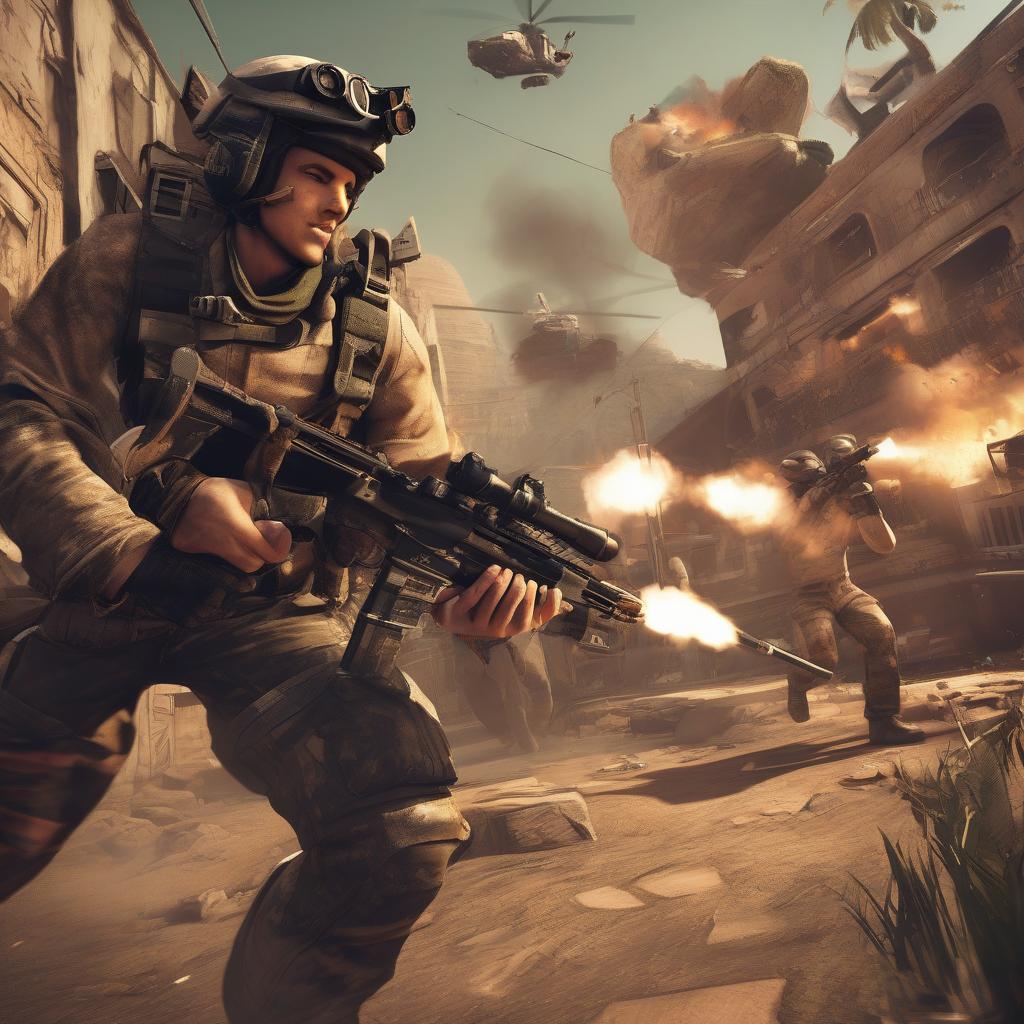Ah, the world of gaming, especially when it comes to FPS games. It’s a universe filled with excitement, challenges, and a fair dose of adrenaline. You know, when we think about FPS, or First-Person Shooters, we’re not just thinking about shooting and strategy. It’s a whole experience. A mix of reflex, instinct, and strategy. These games have been a cornerstone of the gaming industry, evolving with technology and player preferences. Maybe you’ve played a few yourself? Or maybe you’re just curious. Let’s dive into this world a little bit deeper.
What Exactly is FPS?
When we talk about FPS, we’re diving into a genre that focuses on a perspective where the player sees through the eyes of the character. It’s immersive. You’re not just controlling a character; you are the character. This perspective makes it personal, intense, and, at times, downright nerve-wracking.
First-person shooters allow players to engage in combat scenarios with a first-person view. The screen becomes your eyes, and every move feels like it’s your own. Popular titles like “Call of Duty” and “Counter-Strike” have dominated the FPS scene, each offering unique mechanics and storylines that pull players into their worlds. These games demand quick reflexes, strategic thinking, and, often, teamwork.
The Evolution of FPS Games
So, where did it all begin? The roots of FPS games can be traced back to the early ’90s, with games like “Doom” and “Wolfenstein 3D.” They set the stage for what was to come. Back then, it was all about simple graphics and straightforward gameplay. But those games laid the foundation, introducing many to the thrill of first-person perspective gaming.
As technology advanced, so did the games. Graphics became more realistic, storylines more intricate. Titles like “Half-Life” introduced narrative elements that made you care about the world and characters. Then there’s “Halo,” which not only pushed the boundaries of console FPS games but also introduced online multiplayer to the masses.
Modern FPS Games
Fast forward to today, and the landscape is vast. We have battle royales like “Fortnite” and “PUBG,” which take the FPS genre and mix it with survival elements. It’s about outlasting opponents, often in expansive maps where strategy is as important as aim.
And let’s not forget the competitive scene. Games like “Overwatch” and “Valorant” have carved out a niche in esports. Teams from around the globe compete for glory, and it’s an exhilarating spectacle. The level of skill on display is mind-blowing, and it shows just how far the genre has come.
Why Do We Love FPS Games?
Why do so many find themselves drawn to these games? I think it’s the blend of challenge and reward. There’s something satisfying about honing your skills, improving your aim, or devising a new strategy. Then there’s the social aspect. Jumping online with friends, coordinating tactics, and claiming victory? It’s a shared experience that’s hard to beat.
The Skills Behind the Game
Reflexes, hand-eye coordination, and spatial awareness are just a few skills sharpened by FPS games. The fast-paced nature requires quick thinking and decision-making. It’s almost like a mental workout. You’re constantly adapting, learning from mistakes, and trying new tactics.
Plus, there’s a whole community aspect. Forums, subreddits, and Discord servers buzz with discussions about the latest updates, strategies, and even memes. You can connect with players worldwide, share tips, or just chat about your favorite game moments.
FPS and Technology
Can’t talk about FPS without mentioning technology. As tech evolves, so do the games. Graphics cards, VR headsets, and faster internet connections have opened new possibilities. Virtual reality, in particular, is pushing boundaries. Imagine being fully immersed, where you physically duck to avoid in-game obstacles. Sounds like a workout, right?
Then there’s cloud gaming, a trend that’s been growing. Streaming games directly to your device without needing powerful hardware could change the landscape. If you’re interested in more technological trends, you might want to check out some technology updates and insights.
Challenges and Controversies
Of course, with popularity comes scrutiny. FPS games have faced criticism over the years. Concerns about violence, addiction, and their impact on young players are frequent topics in discussions. The debate is ongoing, with research often cited on both sides.BBC Technology has covered these discussions extensively, highlighting both perspectives.
Developers have responded by introducing parental controls, content warnings, and rated systems to help guide players. It’s a complex issue, one that balances creative freedom with social responsibility.
Looking Forward: The Future of FPS
So, what’s next? With AI, machine learning, and new hardware on the horizon, FPS games will continue to evolve. We might see games with smarter enemies, more dynamic worlds, and even more immersive experiences. Who knows? Maybe you’ll play a game where every decision drastically changes the story’s outcome, like a choose-your-own-adventure on steroids.
And with the rise of indie developers, we can expect fresh ideas and unique twists on the traditional FPS formula. It’s an exciting time to be a gamer with endless possibilities.
The world of FPS gaming is vast and varied, full of communities, competitions, and countless hours of entertainment. Whether you’re a veteran or a newcomer, there’s something for everyone. It’s all about finding what you enjoy, whether that’s fast-paced action, tactical gameplay, or just hanging out with friends in a virtual world. So, grab your controller or mouse and keyboard, jump into a game, and see where it takes you.
FAQs
- What’s the difference between FPS and TPS? TPS stands for Third-Person Shooter, where you see your character from behind rather than through their eyes. Different perspectives, different gameplay experiences.
- Are FPS games only about shooting? Not really. While shooting is a key component, many games incorporate strategy, exploration, and storytelling.
- Is it true that FPS games can improve reflexes? Many players report better hand-eye coordination and quicker reflexes, but it’s always good to balance gaming with other activities.
- What’s the best FPS game for beginners? “Portal” is a great start for those new to the genre. It’s puzzle-based, with minimal shooting, helping you get used to the first-person perspective.
- Are FPS games suitable for kids? It depends on the game’s content and the child’s maturity. Always check age ratings and maybe try some family-friendly FPS games first.


